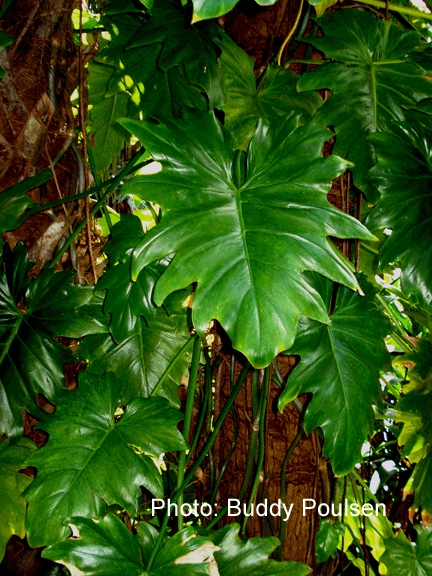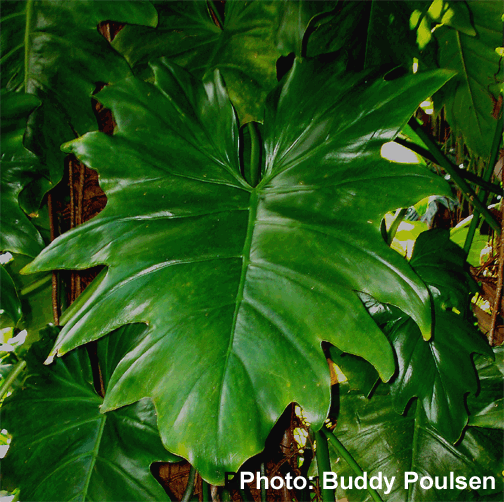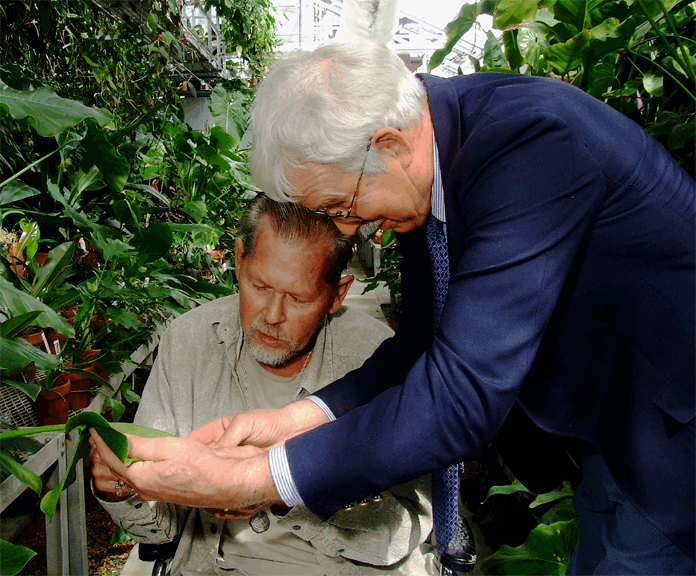![]()
Aroids and other genera in the Collection
Take the Tour Now?
Orchids
The
Exotic Rainforest
Plants in
the Exotic Rainforest Collection
Images on this website are copyright protected. Contact
us before attempting to reuse.
In depth information on how to grow Philodendron species, Click this Link
Within our collection we have many species of Philodendron. If you are seeking other photos, click this link
Philodendron lacerum
(Jacq.) Schott

 A
member of Philodendron
section Polytomium,
Philodendron
lacerum (LASS-er-um) was published to science
in 1829. At one time the plant was actually noted as a "Philodendrum". Philodendron
lacerum is found in nature in Jamaica, Cuba, and on
the island of Hispaniola including both the Dominican
Republic and Haiti.
A
member of Philodendron
section Polytomium,
Philodendron
lacerum (LASS-er-um) was published to science
in 1829. At one time the plant was actually noted as a "Philodendrum". Philodendron
lacerum is found in nature in Jamaica, Cuba, and on
the island of Hispaniola including both the Dominican
Republic and Haiti.Philodendron lacerum grows as either an epiphyte (ep-a-FIT) or a hemiepiphytic species. An epiphyte (ep-a-FIT) is as species that grows upon the side of branches of a tree as a result of a seed being placed in the tree in the droppings of a bird, animal or bat. A hemiepiphyte (hem-a-EPA-fit) normally begins life as a seed which has fallen to the ground and then climbs the host tree. Hemiepiphytes may also be epiphytic (a plant that begins life on the branch of a tree) and then drop roots to the soil that become firmly established in the soil.
 leaf
appearing to be a hood
whose purpose is to protect the spadix at the
center.
The spadix is a spike on a thickened fleshy axis
which can produce tiny flowers.
On the spadix at the center of
the inflorescence there can be found very tiny
flowers when the plant is at anthesis. When ready to
reproduce, the spadix produces male, female and
sterile flowers which if pollinated by an
appropriate insect, normally a beetle, will
produce berries containing seeds.
leaf
appearing to be a hood
whose purpose is to protect the spadix at the
center.
The spadix is a spike on a thickened fleshy axis
which can produce tiny flowers.
On the spadix at the center of
the inflorescence there can be found very tiny
flowers when the plant is at anthesis. When ready to
reproduce, the spadix produces male, female and
sterile flowers which if pollinated by an
appropriate insect, normally a beetle, will
produce berries containing seeds. 
My appreciation to aroid botanist Dr. Thomas B. Croat Ph.D., P.A. Schulze Curator of Botany of the Missouri Botanical Garden in St. Louis for identifying this specimen from a cutting taken to his office in June, 2008.
Want to learn more
about aroids?
Join the
International Aroid Society:
http://www.exoticrainforest.com/Join%20IAS.html
Aroid Pollination!
As
it occurs in nature and by any horticulturist
If you are seeking information on
other rare species, click on "Aroids and other genera in the Collection" at
the top and look for the